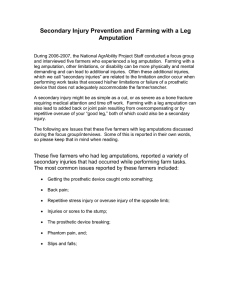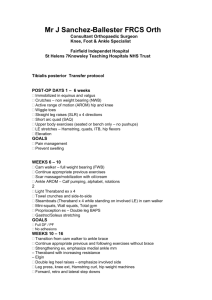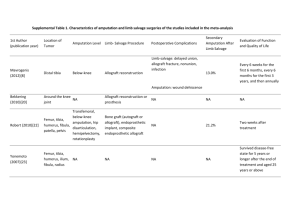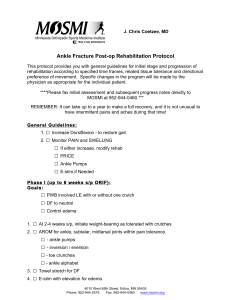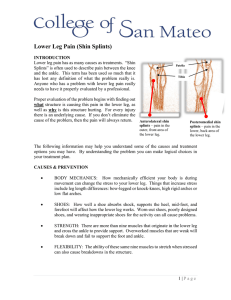Experimental and Theoretical Analyses of Below
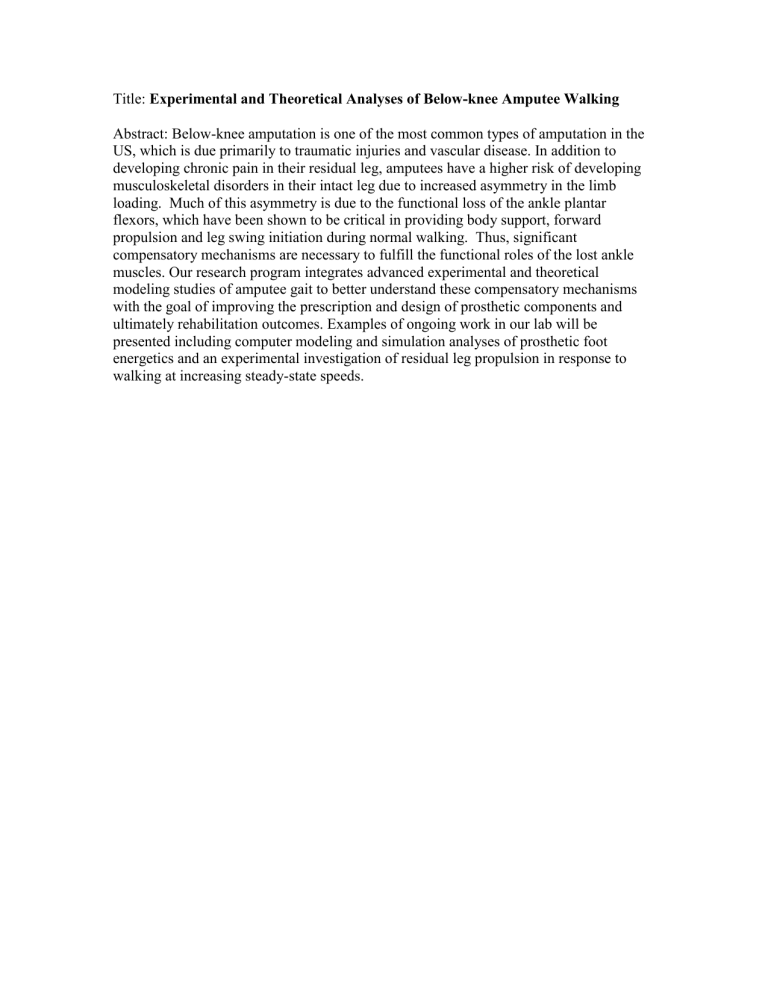
Title: Experimental and Theoretical Analyses of Below-knee Amputee Walking
Abstract: Below-knee amputation is one of the most common types of amputation in the
US, which is due primarily to traumatic injuries and vascular disease. In addition to developing chronic pain in their residual leg, amputees have a higher risk of developing musculoskeletal disorders in their intact leg due to increased asymmetry in the limb loading. Much of this asymmetry is due to the functional loss of the ankle plantar flexors, which have been shown to be critical in providing body support, forward propulsion and leg swing initiation during normal walking. Thus, significant compensatory mechanisms are necessary to fulfill the functional roles of the lost ankle muscles. Our research program integrates advanced experimental and theoretical modeling studies of amputee gait to better understand these compensatory mechanisms with the goal of improving the prescription and design of prosthetic components and ultimately rehabilitation outcomes. Examples of ongoing work in our lab will be presented including computer modeling and simulation analyses of prosthetic foot energetics and an experimental investigation of residual leg propulsion in response to walking at increasing steady-state speeds.
